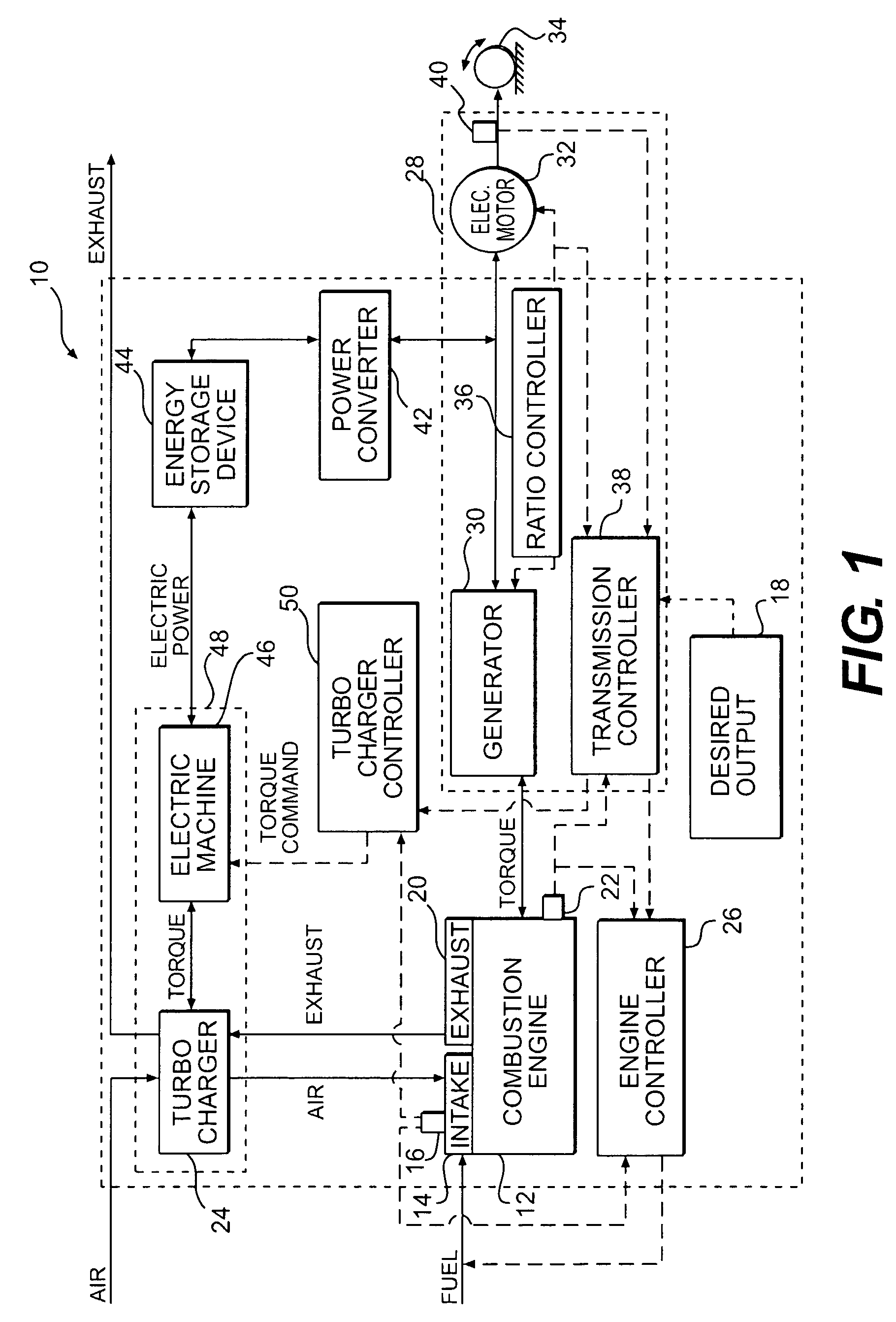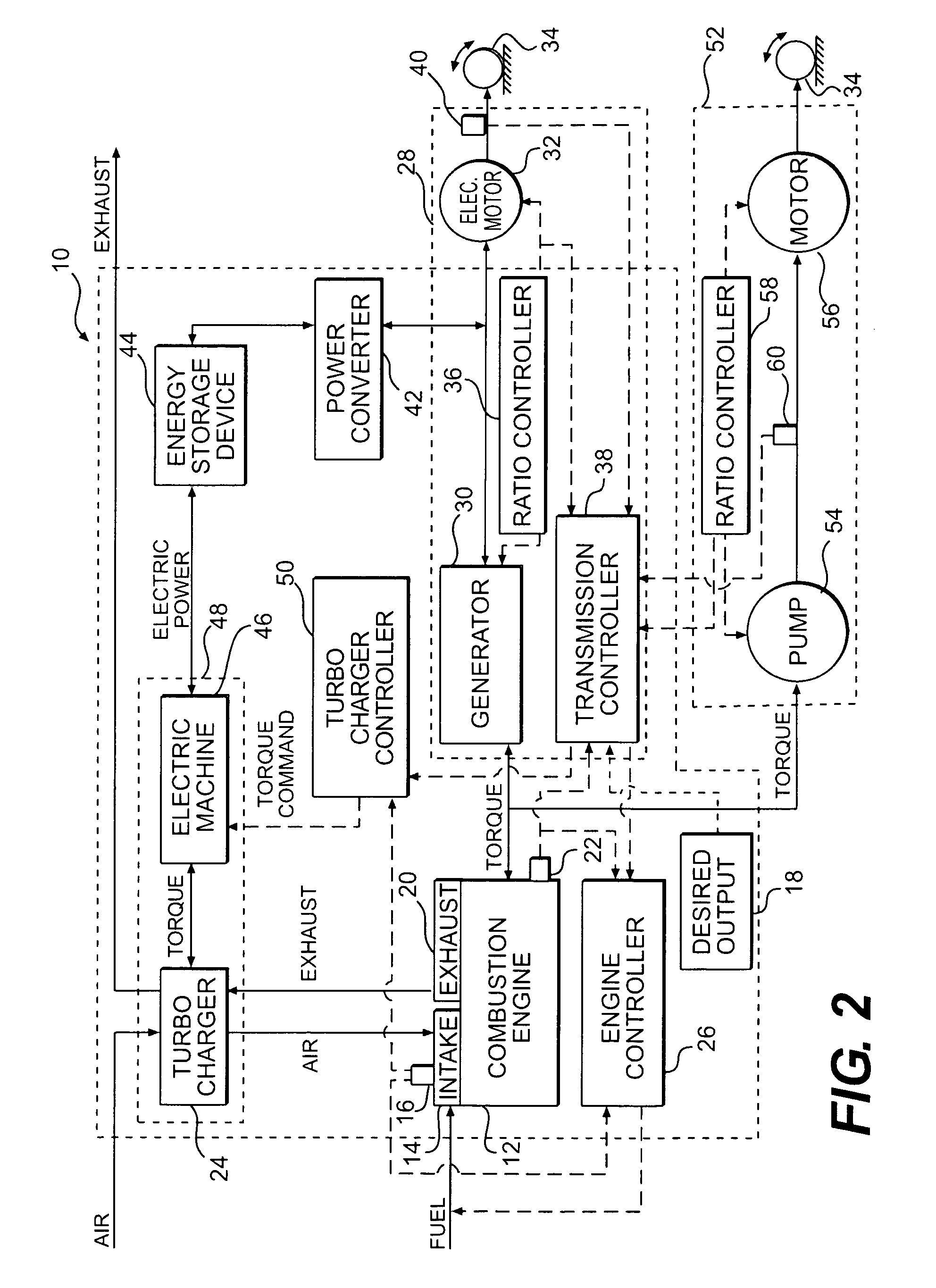Turbocharger system
a technology of turbocharger and engine, which is applied in the direction of machines/engines, output power, electric control, etc., can solve the problems of inefficient and/or undesirable operation of the combustion engine, unacceptably high exhaust emission level of combustion, and sudden large load placed on the power generation system
- Summary
- Abstract
- Description
- Claims
- Application Information
AI Technical Summary
Benefits of technology
Problems solved by technology
Method used
Image
Examples
Embodiment Construction
[0026]FIG. 1 schematically illustrates an exemplary power generation system 10, for example, an electric power generation system. Power generation system 10 may include one or more combustion engines 12 configured to generate mechanical energy. For example, combustion engine 12 may be an internal combustion engine configured to accept air and fuel via an intake system 14 including an intake manifold and to convert a mixture of the air and fuel into mechanical energy via combustion. Intake system 14 may include a pressure sensor 16 configured to emit a pressure signal representing the magnitude of pressure in the intake manifold. The mixture of air and fuel may be controlled such that its air-to-fuel ratio (AFR) is optimum for desired operation to, for example, improve fuel efficiency and / or reduce exhaust emissions. Further, the amount of air and / or fuel delivered to combustion engine 12 may be at least partially controlled via a signal indicative of a desired output 18, which may b...
PUM
 Login to View More
Login to View More Abstract
Description
Claims
Application Information
 Login to View More
Login to View More - R&D
- Intellectual Property
- Life Sciences
- Materials
- Tech Scout
- Unparalleled Data Quality
- Higher Quality Content
- 60% Fewer Hallucinations
Browse by: Latest US Patents, China's latest patents, Technical Efficacy Thesaurus, Application Domain, Technology Topic, Popular Technical Reports.
© 2025 PatSnap. All rights reserved.Legal|Privacy policy|Modern Slavery Act Transparency Statement|Sitemap|About US| Contact US: help@patsnap.com



